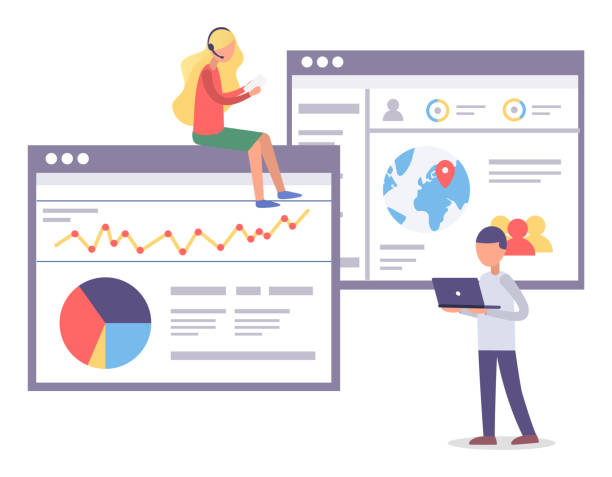Why Having a Personal Website is a Necessity Today?
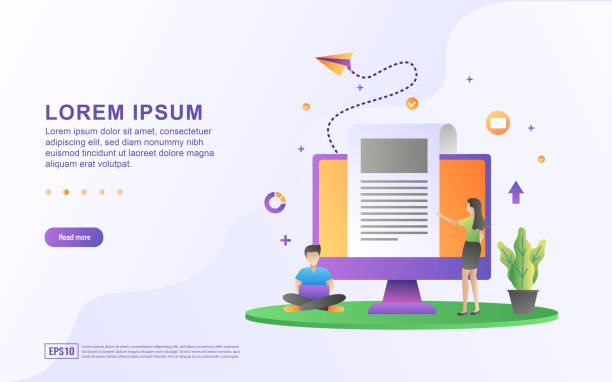
In today’s digital age, where first impressions are often formed online, having a personal website is no longer a luxury choice, but an undeniable necessity.
This website not only establishes your digital identity, but also serves as a central platform to showcase your skills, experiences, and achievements.
In fact, personal branding online is almost impossible without a dedicated website.
This platform allows you to have #complete_control over your narrative and present a consistent and professional image of yourself to your audience, potential employers, or clients.
The difference between a personal website and social media profiles is that you have full ownership of it and can customize it in any way you want.
This means freedom in choosing layouts, colors, fonts, and even content structure.
Through personal website design, you can not only create a dynamic and always-accessible resume, but also visually and attractively display your portfolios.
This is especially vital for #freelancers, artists, writers, and experts in various fields who need to showcase their practical work.
This website is a gateway to new opportunities and a powerful tool for expanding your network.
Did you know that 94% of a first impression of a company is related to its website design?
Rasawweb helps you create the best first impression by providing professional corporate website design services.
✅ Create a professional and trustworthy image for your brand
✅ Easier attraction of potential customers and improvement of online presence
⚡ Get free consultation for corporate website design
Innumerable Benefits of a Dedicated Website for Your Individuality
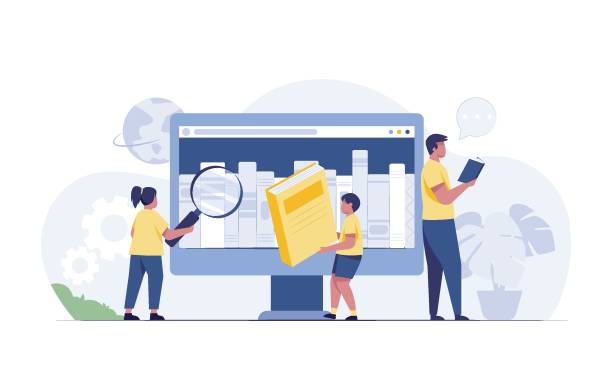
Having a personal website goes beyond mere online presence; it’s a strategic investment in your personal and professional brand.
One of the main advantages is creating a sense of credibility and professionalism.
When someone searches for your name online, a dedicated website is far more impactful than scattered social media profiles.
This website allows you to showcase your skills and expertise in an organized and appealing way.
You can dedicate an entire section to your portfolio, write specialized articles (expert content), or even share your experiences in blog format (educational content).
This platform also allows you to interact more deeply with your target audience, receive their feedback, and even build a small community of enthusiasts in your field.
From an SEO perspective, a personal website provides unparalleled opportunities to improve your ranking in search results, so that when your name or expertise is searched, your website appears at the top of the results (guidance content).
This increased visibility means more opportunities for new collaborations, freelance projects, and even job positions.
In other words, personal website design helps you not only to be seen, but also to be recognized as an authority in your field and to advance your career or professional path with greater confidence.
This powerful tool provides complete control over the information published about you, and therefore, is a valuable asset for anyone in today’s world.
Planning and Infrastructure: The First Step in Personal Website Design
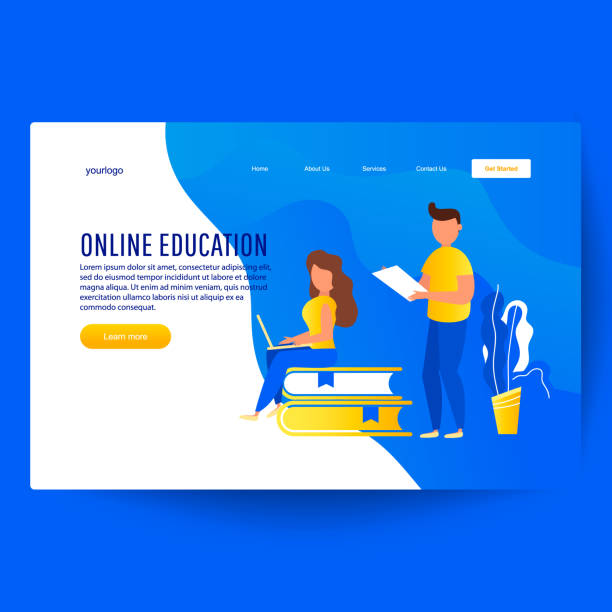
Before you even touch a line of code or choose a platform, meticulous planning is the foundation of success in your personal website design.
The first step is determining the website’s main goal: Is it merely an online resume? A portfolio? A personal blog? Or a combination of all these? (question-provoking content).
The answer to this question will shape your site’s structure and content.
Next, it’s time to choose a suitable domain name.
The domain name should be short, memorable, and relevant to your name or field of activity.
This name is your home address on the internet and must be chosen carefully.
After that, you need to select a reliable hosting service that provides sufficient speed and security for your website.
Good hosting ensures a smooth and optimized user experience and prevents potential technical issues.
Explanatory and Guidance Content: At this stage, you should also think about the overall site structure (site map): What pages do you need? (e.g., About Me, Portfolio, Contact, Blog).
Creating a simple mind map or wireframe can help you visualize the structure.
Deciding on the platform is also crucial; will you use content management systems like WordPress or are you looking for custom coding? (expert content).
Finally, don’t forget about security and backup.
Planning for security updates and regular data backups protects your information from potential incidents.
These steps provide a solid foundation for starting your personal website design process and prevent future confusion.
| Stage | Description | Importance |
|---|---|---|
| Goal Definition | Specifying the main reason for creating the website (resume, portfolio, blog) | Crucial |
| Domain Name Selection | Choosing a unique and relevant address for the website | Crucial |
| Hosting Selection | Purchasing server space to host website files | Crucial |
| Site Map and Structure | Determining main pages and how they connect to each other | High |
| Platform Selection | Deciding between CMS (WordPress) or custom coding | High |
Choosing the Right Platform: A Key Step in Project Execution
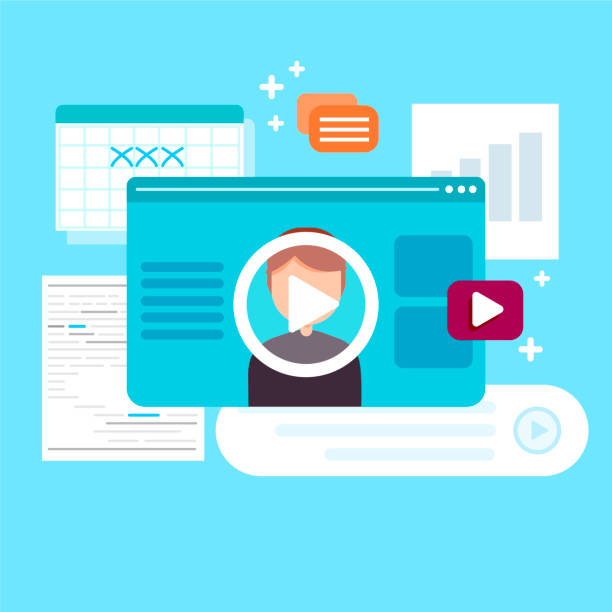
After the planning stage, choosing the platform on which your personal website will be built is of paramount importance.
This decision not only affects the cost and time of personal website design, but also impacts its future development and management capabilities.
There are numerous options available to you, each with its own advantages and disadvantages (explanatory content).
The most popular and common choice for most people is WordPress. WordPress is a highly flexible and user-friendly Content Management System (CMS) that allows you to build and manage your website without needing coding knowledge.
With thousands of free and premium themes and plugins, you can design almost any type of website, from a simple blog to a professional portfolio.
This platform is suitable for beginners to advanced users and boasts a very large user community that provides extensive support and educational resources (educational content).
Other options include website builders like Wix or Squarespace, which offer a much simpler user experience and are suitable for those looking for a quick and hassle-free solution, but may have limitations in customization.
For developers or individuals seeking complete control and infinite customization, custom coding using languages like HTML, CSS, and JavaScript is another option (expert content).
This method provides ultimate flexibility but requires significant technical knowledge.
Choosing the right platform will be the foundation for the success of your personal website design project and should be made considering your needs, skills, and budget.
Does your current website build the trust that potential customers should have in your business? If the answer is no, it’s time to have a professional and impactful corporate website with Rasawweb.
✅ Fully custom design tailored to your brand identity
✅ Significant increase in lead generation and business credibility in the eyes of customers⚡ Contact us for a free consultation!
Principles of User Interface and User Experience Design for Personal Websites
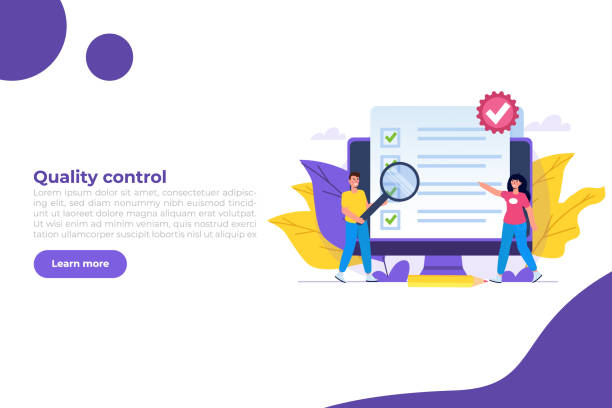
When it comes to personal website design, visual aesthetics aren’t the only important factor; User Interface (UI) and User Experience (UX) are of paramount importance (expert content).
A well-designed website not only looks good but is also easy and enjoyable to use.
UI principles include choosing appropriate colors, legible fonts, sufficient white space, and an attractive visual layout that doesn’t tire the user’s eyes and displays information clearly.
The goal is for the user’s first interaction with your site to be positive and pleasant.
On the other hand, UX refers to the overall user experience of interacting with your website.
Does the site load quickly? Is the navigation (menus) intuitive and easy? Can users easily find the information they are looking for? (question-provoking content).
Good UX makes users stay longer on your site and achieve your goals (such as reading articles, viewing portfolios, or contacting you).
This also includes mobile optimization (responsiveness), as a significant portion of web traffic today comes from mobile devices.
You must ensure that your website displays correctly on all screen sizes.
Simplicity, consistency, and usability, are the three main pillars of successful UI/UX design for any type of website, especially in personal website design.
A smart design can better convey your message and leave a lasting impression on your audience (guidance content).
Creating Engaging and Purposeful Content for Your Personal Website
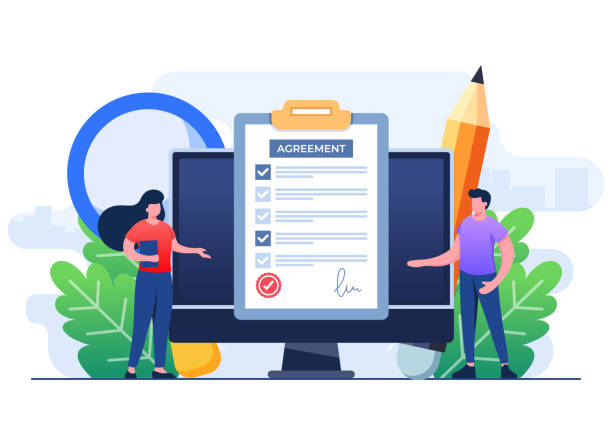
Content is king for any website, and this principle holds true for your personal website design.
After preparing the infrastructure and visual design, it’s time to fill the site with valuable and purposeful content.
The type of content you produce should align with your website’s goals (educational content).
If your goal is to showcase your portfolio, high-quality images, detailed project descriptions, and even short videos can be highly effective.
If you aim to be recognized as an authority in a specific field, writing specialized blog articles, in-depth analyses (analytical content), and practical guides can attract visitors to your site.
For a personal website, “About Me” content is crucial.
This section should present a captivating and authentic story about you, your experiences, skills, and aspirations.
Try to provide a personal and inspiring narrative that connects with the audience, rather than just listing achievements (entertaining content).
Using high-quality images and videos can enhance the content’s appeal.
Also, your content should be updated regularly.
An active blog that is updated weekly or monthly not only demonstrates your activity but also helps improve your site’s SEO, as search engines prioritize fresh content.
Ultimately, always prioritize content quality over quantity.
Original, useful, and engaging content encourages users to stay longer on your site and even share it with others.
This approach is the foundation for long-term success in personal website design.
The Importance of SEO for Your Personal Website’s Visibility
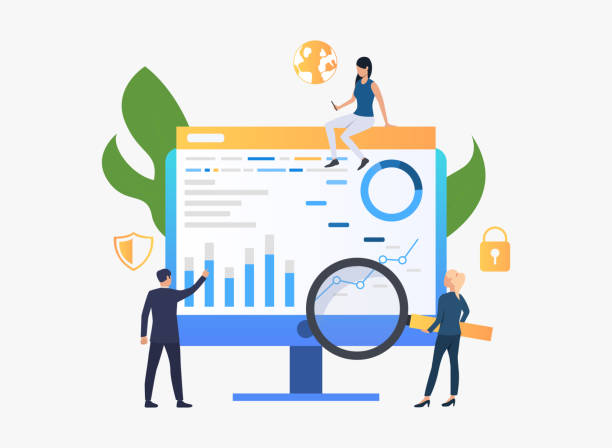
Personal website design alone is not enough; you need to ensure people can find it.
This is where Search Engine Optimization (SEO) comes into play.
SEO is a set of techniques that helps your website achieve a higher ranking in Google and other search engine results, thereby attracting more traffic to itself (expert content).
For a personal website, SEO includes several key sections:
- Keyword Research: The words people search for to find you or your expertise on Google.
Use keyword research tools to find phrases related to your name, field of work, and skills (educational content). - Content Optimization: Strategic use of keywords in titles, main text, meta descriptions, and URL addresses.
Your content should be valuable and practical and answer users’ questions (guidance content). - Technical Optimization: Ensuring site loading speed, responsiveness (mobile compatibility), proper URL structure, and use of HTTPS protocol.
These factors affect user experience and consequently SEO ranking. - Link Building: Acquiring high-quality links from other websites (backlinks).
These links are a sign of your site’s credibility to search engines.
You can gain links by writing guest articles or participating in online communities.
The main goal of SEO for a personal website is for your website to appear at the top of search results when employers, potential clients, or colleagues search for your name or expertise. This increased visibility means more opportunities and growth for your personal brand.
In today’s competitive world, ignoring SEO means wasting your efforts in personal website design.
| SEO Item | Description for Personal Website | Key Point |
|---|---|---|
| Keywords | First and last name, expertise (e.g., “Software Engineer Tehran”, “Creative Graphic Designer”) | Focus on Long-tail keywords |
| Content | Resume, portfolio, specialized blog, educational articles | Quality and up-to-date content |
| Technical Optimization | Loading speed, responsiveness, SSL certificate (HTTPS) | Excellent User Experience |
| Link Building | Links from social networks, links from project websites, participation in blogs | Quality over quantity |
| Google My Business Profile | If you have a local business, create and optimize this profile | Increase Local Visibility |
Website Maintenance for Optimal Performance and Security

After your personal website design is complete and published, your work is not over.
In fact, this is just the beginning.
Regular website maintenance is crucial to ensure its optimal performance, security, and up-to-dateness (guidance content).
Ignoring this aspect can lead to serious security issues, slow performance, and even data loss.
The first important aspect is regular updates of the Content Management System (like WordPress), themes, and plugins. Developers constantly release updates that include bug fixes, performance improvements, and most importantly, security patches.
Ignoring these updates makes your website vulnerable to cyber attacks.
The second point is regular backup of the entire website (files and database).
In case of any unforeseen issues such as hacker attacks, server failures, or human error, having an up-to-date backup can quickly restore your website (explanatory content).
The third aspect, is monitoring website performance and speed.
Tools like Google PageSpeed Insights can help you identify and resolve speed-related issues.
A slow website drives users away and negatively impacts your SEO ranking.
Additionally, monitoring site security through security plugins and reviewing server logs to identify suspicious activities is essential (news content).
By implementing these maintenance measures, you can ensure that your personal website is always at its best and serves as a powerful tool for branding and connecting with the world.
Does your current website adequately showcase your brand’s credibility? Or does it drive away potential customers?
Rasawweb, with years of experience in professional corporate website design, is your comprehensive solution.
✅ A modern, beautiful website tailored to your brand identity
✅ Significant increase in lead and new customer acquisition⚡ Contact Rasawweb now for a free corporate website design consultation!
Beyond an Online Resume: Hidden Uses and Potentials
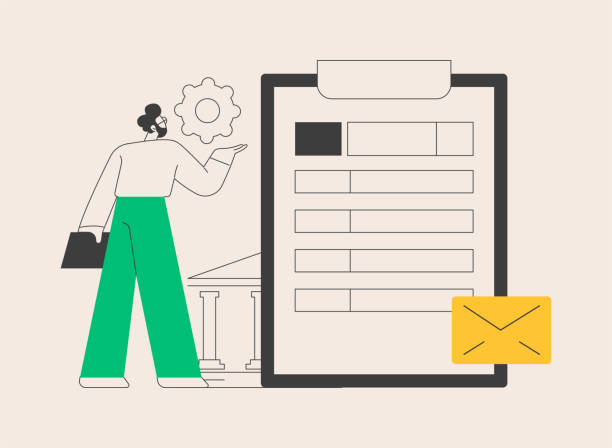
While many individuals view personal website design merely as an online resume or portfolio, its potential extends far beyond these traditional definitions.
A personal website can become a source of income, a platform for side projects, or even a testing ground for new ideas (entertaining and analytical content).
For example, if you are an expert in a specific field, you can earn income by offering online consultations or selling educational courses (educational content) through your website.
Additionally, if you enjoy writing, you can make your blog so rich and specialized that you generate income through advertising, affiliate marketing, or sponsorships.
This isn’t limited to blogging; if you’re an artist, you can sell your artwork directly through your site, reducing intermediary costs.
A personal website can also serve as a platform for your side projects or small startups.
You can test your new ideas on a small scale, gather user feedback, and even generate excitement for your product or service before its official launch.
This approach allows you to gauge the potential of your ideas without needing large initial investment (news content).
Ultimately, a personal website can be a space to connect with a community of like-minded individuals and experts in your field, and these connections can lead to new job or collaboration opportunities.
Therefore, approach personal website design with an open mind and consider it not just a resume, but a command center for all your online activities.
Promoting and Marketing Your Personal Website to Increase Traffic

Once your personal website design is complete and its content is ready, the next step is to introduce it to the world.
Without effective advertising and marketing strategies, even the best websites might go unnoticed (guidance content).
To increase traffic and attract your target audience, you can use various methods.
Using Social Networks: Being active on platforms like LinkedIn, Twitter, Instagram, or Facebook and sharing your website’s content on these platforms is an excellent way to drive traffic to your site.
Ensure your website link is visible on all your social profiles.
Content Marketing: Writing high-quality articles, creating educational videos, and designing infographics related to your area of expertise can position you as an authority in the eyes of your audience.
This content should answer users’ questions and provide real value (analytical content).
Email Marketing: Collecting visitors’ emails through subscription forms and sending regular newsletters is an effective way to maintain communication with your audience and bring them back to your website.
In these newsletters, you can share your latest articles, projects, or news related to your activities (news content).
Guest Posting: Writing guest articles for other websites and blogs in your field of work not only helps you gain quality backlinks but also exposes you to new audiences.
Paid Advertising: If you have the budget, you can use Google Ads or social media advertising to target specific audiences.
This method can quickly funnel significant traffic to your website.
A combination of these strategies can help you significantly increase your personal website’s visibility and achieve your personal branding goals.
The more time you invest in promoting your personal website design, the better results you will get.
Frequently Asked Questions
And other services of Rasawweb Advertising Agency in the field of advertising
Advertorials for laptops suitable for remote work
How notebook importers can surpass competitors with advertorials
Using FAQs in laptop advertorials
Advertorials focusing on user experience of imported notebooks
The role of real customer stories in laptop advertorials
And over hundreds of other services in the field of internet advertising, advertising consultation, and organizational solutions
Internet Advertising | Advertising Strategy | Advertorial
🚀 Transform your business’s digital presence with Rasawweb’s internet advertising and advertorial strategies.
📍 Tehran, Mirdamad Street, next to Bank Markazi, Kazerun Jonubi Alley, Ramin Alley No. 6

